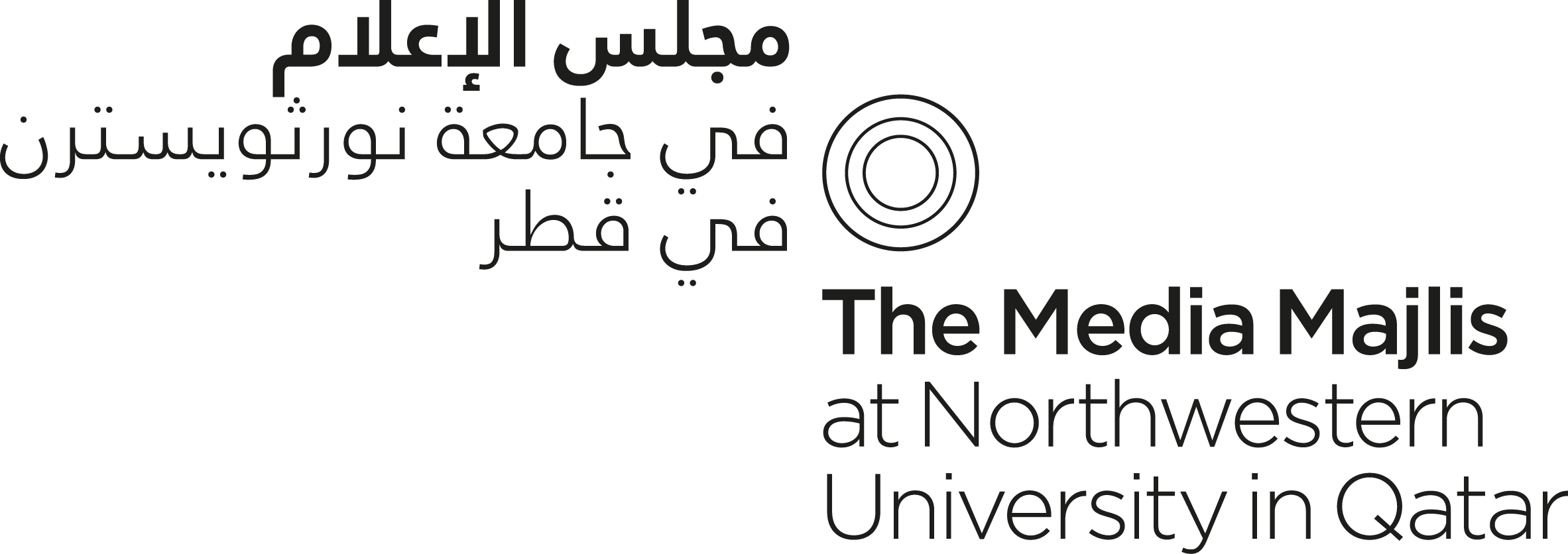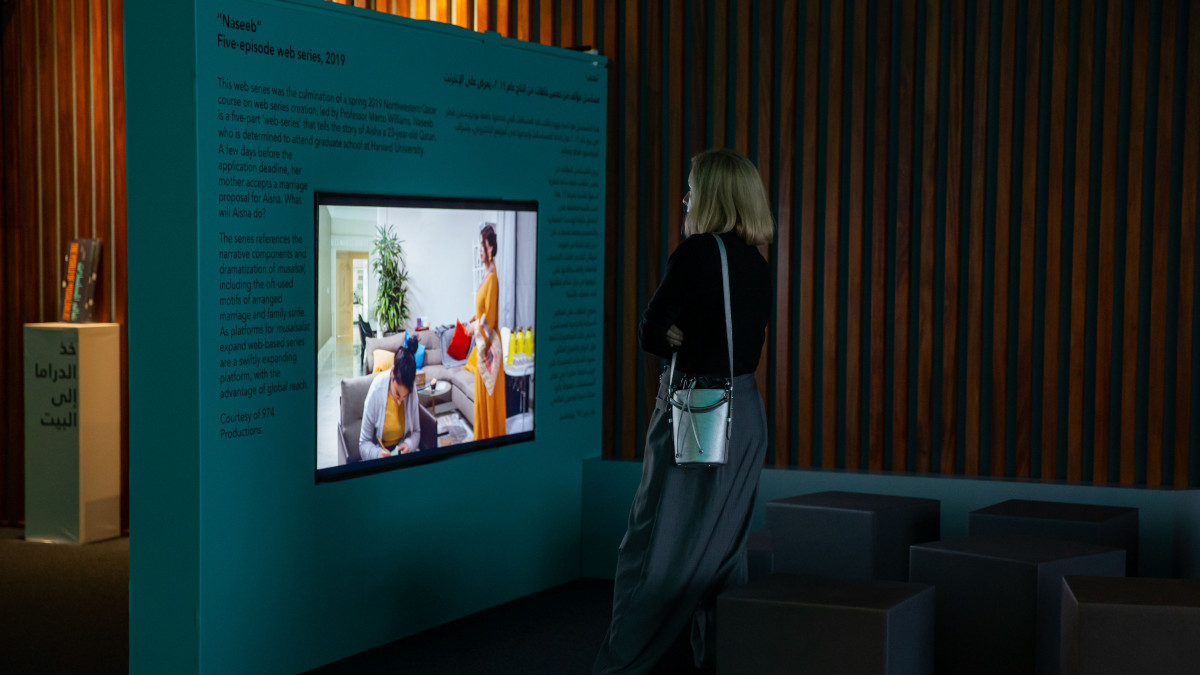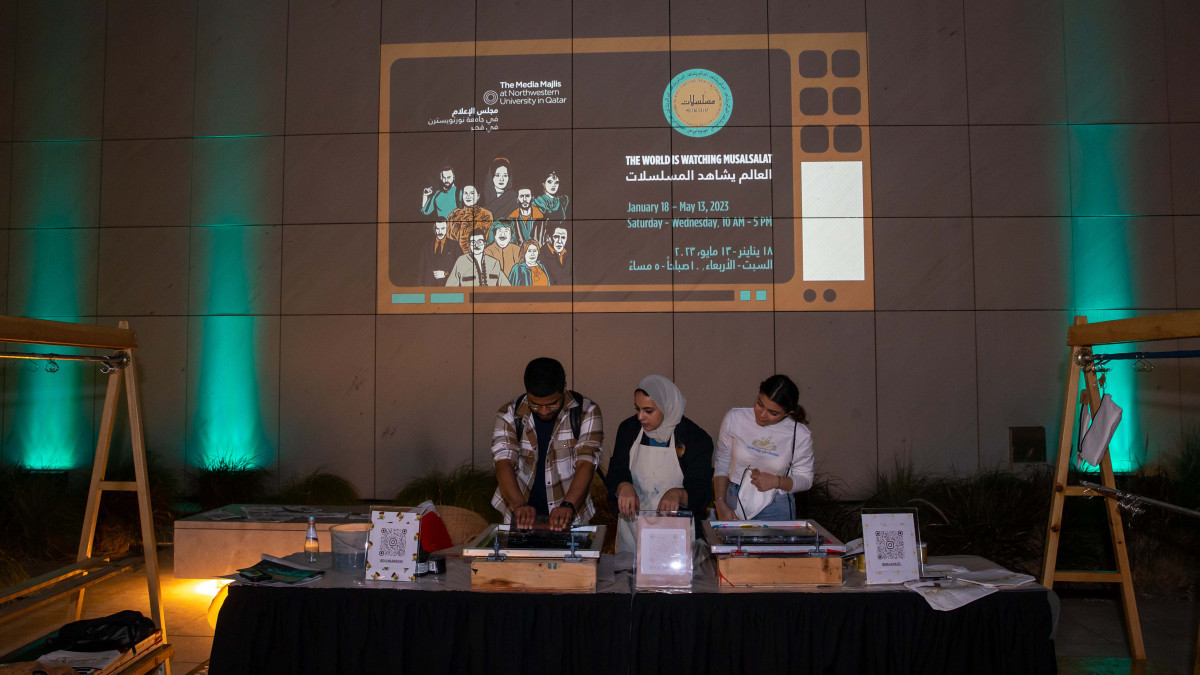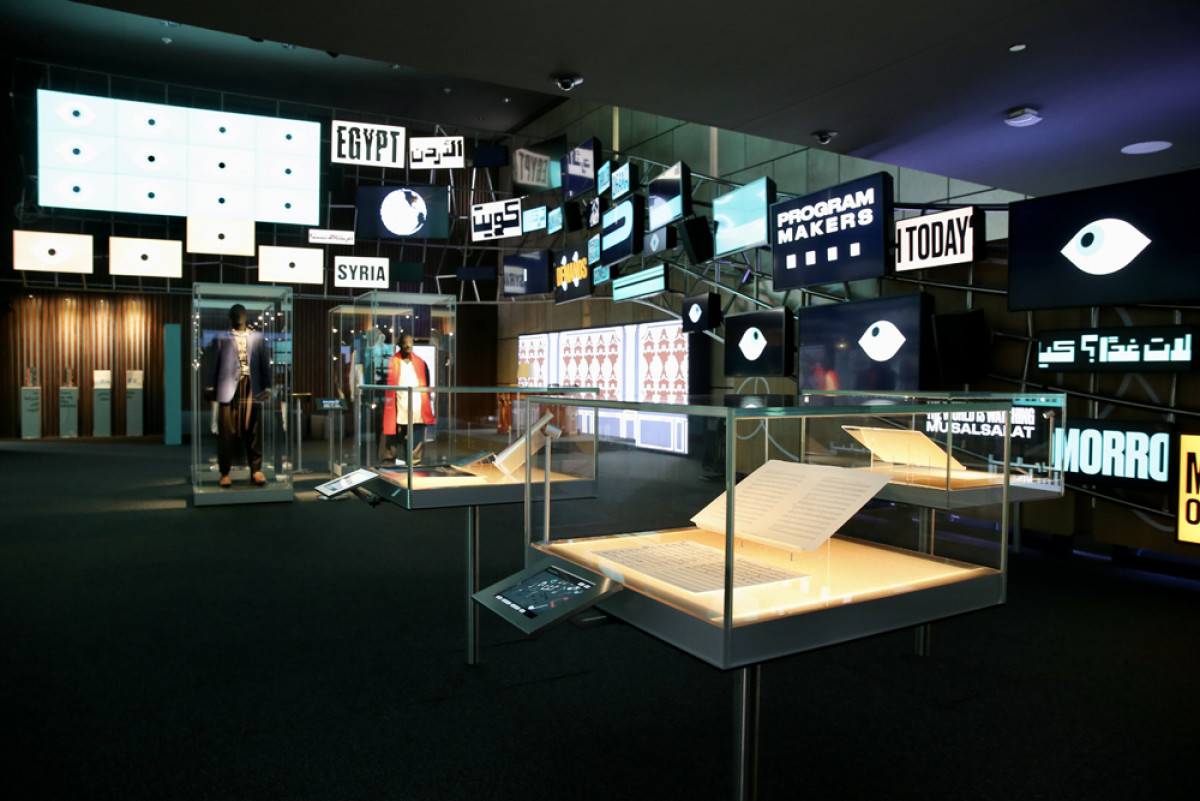
From the first Ramadan musalsal in 1978 to the era of video-on-demand in the 1990s and online streaming today, dramas continue to be watched, debated and dissected by millions, especially during the primetime television Ramadan season.
The World is Watching Musalsalat invites you to consider your television drama viewing and how much control do makers and viewers of television drama have? What political factors influence the musalsalat on our screens, your access to them, and your choices of watching habits—today and tomorrow?
The exhibition and accompanying programs and publication investigate the impacts of musalsalat, serial television dramas produced in the Arab world, and increasingly outside it, which dominate television schedules during Ramadan. The key players who shaped the historical development of musalsalat in Egypt, Syria and Kuwait distributed dramas across the region to be watched on national television channels. After the satellite boom of the 1990s, Saudi Arabia and the UAE became industry leaders, with power both as makers—financing and investing in productions from across the Middle East—and as watchers, providing large markets of viewership for musalsalat and expanding distribution networks further afield.
The rise in co-productions and streaming sites such as Netflix and Shahid in the 2010s has proved that musalsalat are increasingly affected by global trends, as foreign-produced television dramas bring forth new encounters and create cultural contact zones. The popularity of dramas from Latin America, Turkey and Korea which project and reflect cultural affinities in this region—attitudes to love, family life and social issues—are repackaged for Ramadan, often dubbed into the Syrian dialect.
As the proliferation of television dramas as local cultural products become less relevant, this exhibition considers whether trends in television dramas are becoming hyper global or hyper local. Gulf audiences continue to be an influential market segment for musalsalat as a growing roster of global drama producers compete for viewer attention.
However, outside of language and dialect, how far from cultural peripheries can these dramas travel and still be considered a 'local product?' Are global television trends making us more interconnected or less culturally distinct?
Join us in spring 2023 for a behind-the-scenes look at the drama, money, power and futures of this lucrative cultural industry because the world is watching musalsalat.
This exhibition is accompanied by a full color publication, in our Voices and Conversations series. Available in Arabic and English, at the university Bookstore and online. Follow the museum on social media for updates on programs, forthcoming exhibitions and events.















